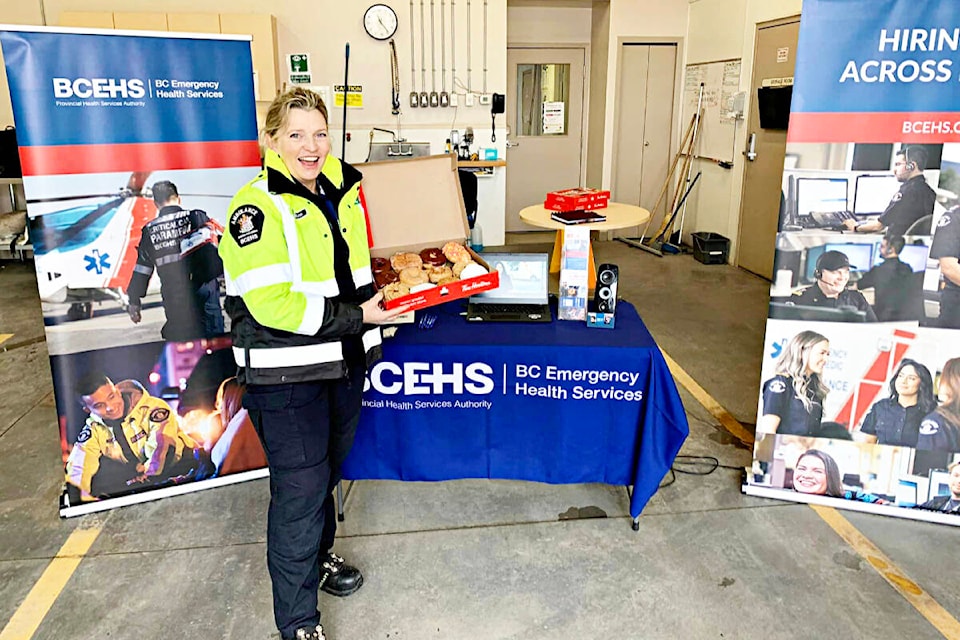Clinton, Logan Lake, Boston Bar, and Lytton are four of the 60 rural and remote communities across B.C. set to benefit from the province adding 271 full-time paramedic positions to the BC Emergency Health Services (BCEHS). The improvements to the province’s paramedic staffing models were announced on Nov. 9 by health minister Adrian Dix.
The changes will continue the province’s transition away from on-call shifts and toward more full-time positions, with the goal of bettering conditions for paramedics and improving access to ambulances in areas that have historically been under-served.
The type of staffing model being implemented depends on the size and needs of each of the 60 communities. Rural and remote communities on the larger size, such as Clinton, Logan Lake, and Boston Bar, will transition to a 24/7 “Alpha” model. This means the communities will have at least eight full-time paramedics in their stations, with someone always on duty, no matter the time of day. This model will be implemented in 21 communities and will amount to paramedics being on-duty three times more than currently.
Slightly smaller communities, such as Lytton, will move to a mixed staffing model. They will have eight part-time staff, who will be on-duty for 16 hours a day and on-call for another eight hours. This model will be used in 25 communities and will amount to staff being on-duty twice as often as currently.
Communities judged to have the fewest ambulance needs, such as Seton Portage and Gold Bridge, will switch to a “Kilo” model. This model means the communities will have one full-time permanent unit chief and varying paramedic staffing levels. It will be used in 14 communities.
In February 2023, the 2022-2025 collective agreement with the Ambulance Paramedics and Ambulance Dispatchers of BC was ratified. It agrees to phase out a pre-existing scheduled on call (SOC) model into one of the three different models outlined above, which will better address the needs of ambulance paramedics and the communities they serve.
The changes mean that paramedics will no longer need to work for 72 straight hours, as required in the SOC model. Paramedics will also have a better work/life balance, which means that BCEHS will be better able to ensure all communities are covered, especially in the evenings.
Jason Jackson, the new president of the Ambulance Paramedics of BC union, said the models will both increase ambulance services in the chosen communities and improve working conditions for paramedics. The staffing changes come almost a year after paramedics ratified their latest contract, in which on-call pay was bumped from $2 to $12 an hour and mental health benefits were introduced.
Jackson said all these changes should make a difference in recruiting and retaining people, as the province continues to face a paramedic shortage. The province has not yet announced a timeline as to when the changes will be implemented.
“We are excited to be bringing these staffing model improvements to our paramedics and the rural and remote communities we serve,” said Leanne Heppell, BCEHS’ Chief Ambulance Officer. “We recognize that one staffing model doesn’t work for all parts of the province, and these three models will help us improve our services to better meet the needs of the community and patients and enable more of our paramedics to live and work in their home communities.”
The changes mean that many current part-time paramedic positions will become full-time, while an additional 271 new full-time positions will be added to support the new models. In addition, 55.2 full-time equivalent community paramedics will be dedicated to providing community-based care and community outreach.
Since 2017, more than 1,000 new permanent full-time paramedic and emergency medical responder positions have been added across B.C.
“Everyone deserves to get reliable access to care, no matter where they live,” Jennifer Rice, Parliamentary Secretary for Rural Health, said. “This announcement will go a long way in supporting rural and remote communities and will help ensure more equitable access to health care.”
